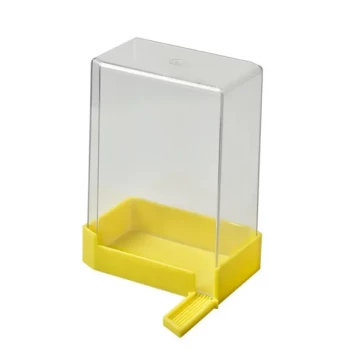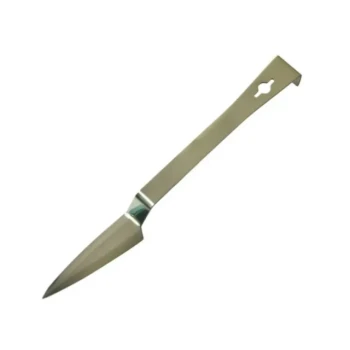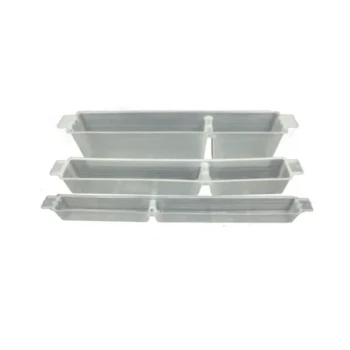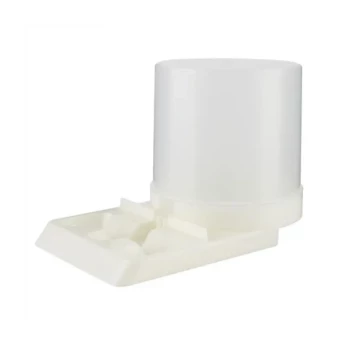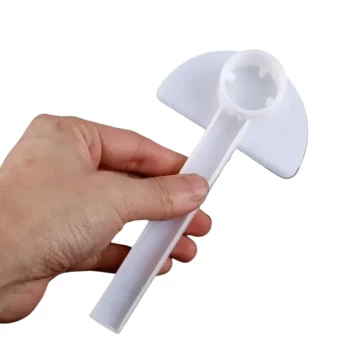To start a new beehive, you have two primary options. A nucleus colony, or "nuc," is a small, fully functioning hive with a laying queen, worker bees, and frames of brood and food. In contrast, a bee package is simply a screened box containing a few pounds of loose bees and a separate, caged queen that the bees must accept. A nuc provides a significant head start, while a package requires the bees to build their colony entirely from scratch.
The choice between a nuc and a package is a fundamental trade-off. A nuc offers a faster, more reliable start with a proven queen, making it ideal for beginners. A package offers a lower initial cost and a "clean slate," but with a higher risk of failure and a slower buildup period.

What Defines a Nuc? The Established Colony
A nuc is best understood as a miniature, functioning beehive. It typically consists of four or five deep frames housed in a small, temporary box.
A Functioning Micro-Hive
The bees in a nuc are already an established, cohesive family unit. They have a social structure, have been working together, and most importantly, have already accepted their queen.
Frames of Resources
A nuc doesn't just contain bees; it contains the fruits of their labor. The frames will include brood in all stages (eggs, larvae, and pupae), as well as stores of pollen and honey. This is the colony's pantry and nursery, providing the resources needed for immediate growth.
A Proven Queen
The queen in a nuc is not a stranger to her colony. She has been laying eggs for weeks, and her performance is proven. You can see her laying pattern on the frames, which is a key indicator of her health and quality.
What Defines a Bee Package? The Starter Kit
A bee package is a collection of individual components that must be assembled into a colony by the bees themselves. It's a starting point, not an established entity.
A Collection of Individuals
A standard package contains about three pounds of adult bees (roughly 10,000) in a screened box. These bees are often shaken from multiple hives and do not yet have the social cohesion of an established colony.
The Caged Queen
The queen is kept separate from the other bees in a small cage with a sugar plug. She is mated, but she is a stranger to the workers. The colony's first major task is to accept her as their own.
Starting From Zero
Aside from a can of sugar syrup for the journey, a package contains no resources. The bees have no drawn comb, no brood, and no food stores. They must build their entire world from the ground up on the foundation you provide.
The Installation Process: A Tale of Two Methods
The difference between a nuc and a package becomes immediately apparent on installation day.
Installing a Nuc: The Simple Transfer
Installing a nuc is straightforward and minimally disruptive. You simply open your new hive, remove a few empty frames, and carefully transfer the frames from the nuc box into the center of your hive. The colony essentially just gets a bigger house.
Installing a Package: The Controlled Introduction
Installing a package is a more involved process. The caged queen is placed between frames in the new hive, and then the rest of the bees are shaken or "dumped" into the hive. It can be a chaotic scene. The bees will then spend several days eating through the sugar plug to release and, hopefully, accept their new queen.
Understanding the Critical Trade-offs
Neither option is universally superior; the best choice depends on your goals and risk tolerance.
Colony Buildup Speed
A nuc has a one- to two-month head start on a package. Because it already has a laying queen and developing brood, its population can expand very quickly. A package colony must first draw wax comb, wait for the queen to be accepted and begin laying, and then wait another 21 days for the first new bees to emerge.
Risk of Queen Failure
The risk of queen failure is significantly lower with a nuc. She is already integrated and proven. With a package, there is always a chance the bees will reject and kill the new queen, forcing you to find and introduce a replacement.
Initial Cost and Availability
Bee packages are generally less expensive and more widely available than nucs. The lower price reflects the fact that you are buying raw materials rather than a finished, functioning colony.
Pest and Disease Risk
A package offers a slight advantage in that you are not inheriting old comb, which can potentially harbor diseases. However, a nuc from a reputable local supplier will provide bees that are already adapted to your specific climate and forage.
Making the Right Choice for Your Goals
Your decision should be based on your experience, budget, and beekeeping objectives for the first year.
- If your primary focus is a reliable start with less risk (ideal for beginners): Choose a nuc for its established queen and resource head start.
- If your primary focus is minimizing initial cost or starting with all-new equipment: A bee package is the more economical choice.
- If your goal is a potential honey harvest in the first year: A nuc provides a significant time advantage that makes this a more realistic possibility.
Understanding these fundamental differences empowers you to begin your beekeeping journey with confidence and a clear strategy for success.
Summary Table:
| Feature | Nucleus Colony (Nuc) | Bee Package |
|---|---|---|
| Definition | Miniature, functioning hive | Box of loose bees & caged queen |
| Queen Status | Proven, laying queen already accepted | New, caged queen to be accepted |
| Resources | Frames with brood, honey, and pollen | No comb, brood, or food stores |
| Installation | Simple frame transfer | More involved; shaking bees & queen introduction |
| Buildup Speed | Fast (1-2 month head start) | Slow (must build from scratch) |
| Risk Level | Lower risk of queen failure | Higher risk of queen rejection |
| Initial Cost | Higher | Lower |
| Ideal For | Beginners, reliable starts, first-year honey | Budget-conscious beekeepers, clean slate |
Ready to build a thriving apiary? The right start is crucial for success. At HONESTBEE, we supply commercial apiaries and beekeeping equipment distributors with the high-quality supplies and equipment needed to support both nuc and package installations. Let our wholesale-focused expertise help you build a stronger, more productive operation.
Contact HONESTBEE today to discuss your beekeeping supply needs!
Visual Guide
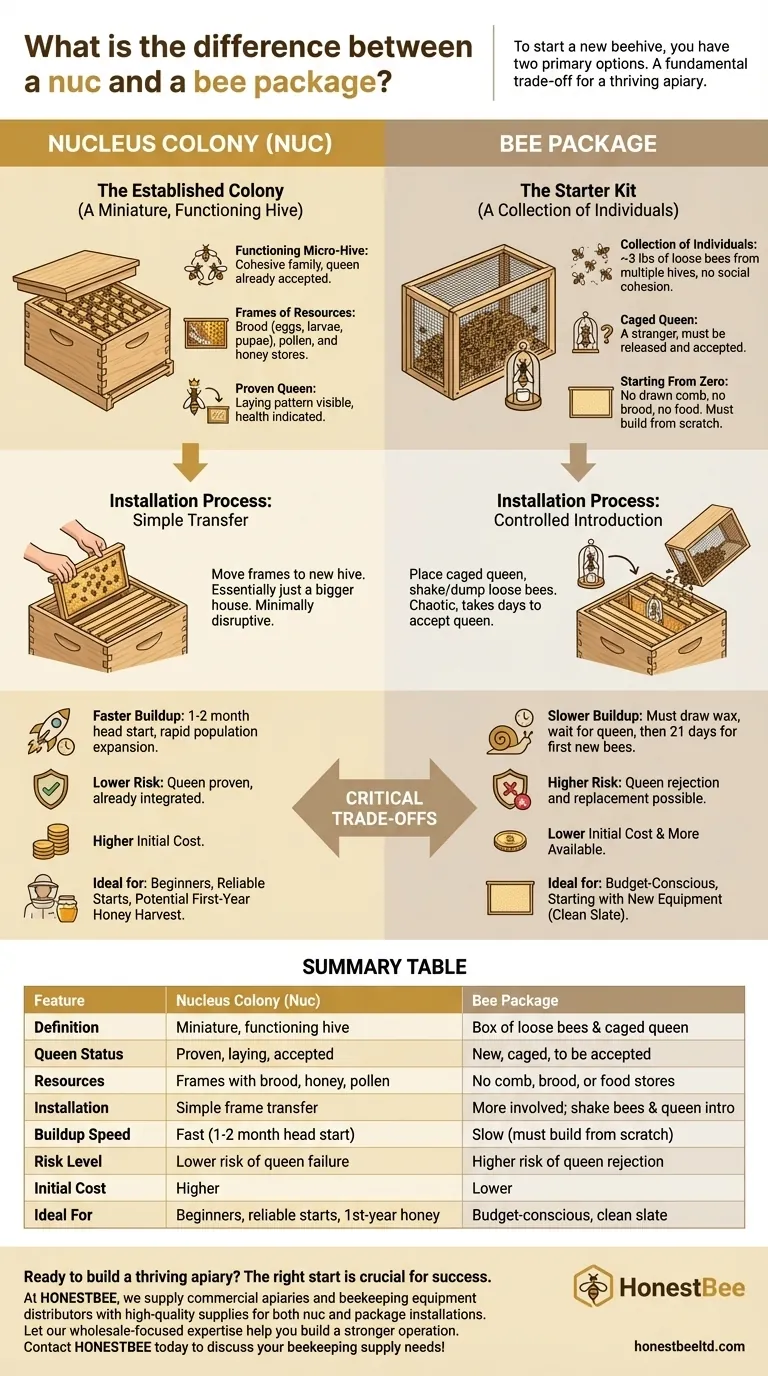
Related Products
- 5 Frame Wooden Nuc Box for Beekeeping
- Twin Queen Styrofoam Honey Bee Nucs Mating and Breeding Box
- Automatic Heat Preservation 6 Frame Pro Nuc Box for Honey Bee Queen Mating
- Plastic Transporting Bee Packages and Nuc Boxes for Beekeeping
- Styrofoam Mini Mating Nuc Box with Frames Feeder Styrofoam Bee Hives 3 Frame Nuc Box
People Also Ask
- What is a common feature of many 5-frame nuc boxes? The Integrated Feeder for Efficient Colony Growth
- What are the benefits of starting a new bee colony in a nuc box? Boost Colony Success with Efficient Beekeeping
- What are the benefits of moving nuclei around the apiary? Master Strategic Hive Management
- What is the most common type of standard nuc? The 5-Frame Nuc Explained
- What is the advantage of overwintering a nucleus? A Strategic Asset for Beekeeping Success







